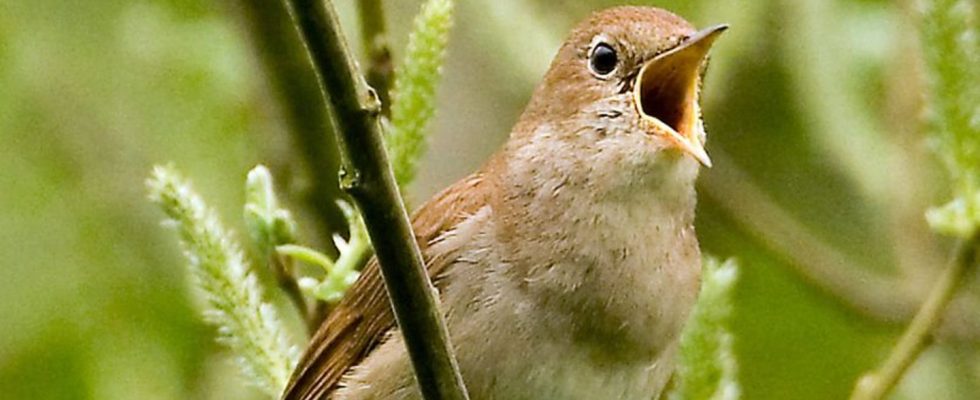Animals
Love Songs in the Night: The Nightingales are back
Male nightingales are known for their varied songs. photo
© DB BirdLife International/BirdLife_International/dpa
In April, tens of thousands of nightingales arrive in Germany. Their famous song can now be heard again in parks and gardens. If you listen closely, you will be surprised.
During these days you can again listen to special concerts in gardens and parks at night. The nightingales are coming back from their winter quarters. There are tens of thousands who arrive in Germany in April from their long journey from Africa to mate and raise their young.
How many exactly there are is not clear. The last national bird protection report from the Federal Agency for Nature Conservation from 2019 gives figures from 2016. At that time, 84,000 to 155,000 nightingale breeding pairs were estimated. Compared to 2004, an increase of 26 percent, compared to 1980 even by 50 percent.
“The nightingale seems to be one of the few long-distance migrant species among the migratory birds whose populations seem to be stable here,” says NABU bird expert Martin Rümmler. The birds feel particularly comfortable in dense bushes, where the ground is covered with rotting leaves. They can also be found in cities, for example in parks and gardens, along railway embankments and in overgrown industrial areas.
An average of 180 to 200 different verse types
According to Rümmler, the nightingales sometimes have a hard time in the countryside. Namely when the same plant species always grow in fields, hedges are removed and many pesticides are used.
The birds are famous for their singing. “On average, male nightingales master 180 to 200 different types of verses,” says Conny Landgraf from the Leibniz Institute for Zoo and Wildlife Research. These vary in length and pitch. There are, for example, so-called trills, punches or whistles. The males combine these sounds into different stanzas, which they recite one after the other, interrupted by short pauses.
As with other songbirds, the nightingales exchange information with their song – and not only at night. During the day, the main purpose of the song is probably to stake out the territories against other males. At night, however, they court a partner.

